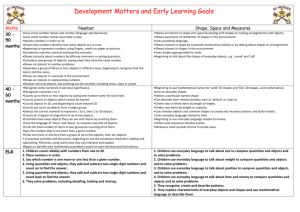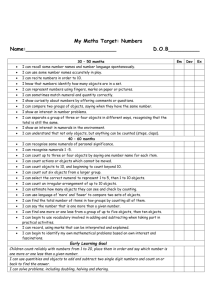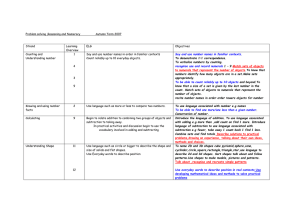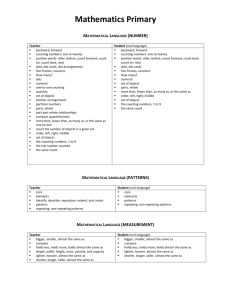Maths Early Learning Goals - FCCE – Frampton Cotterell C of E
advertisement
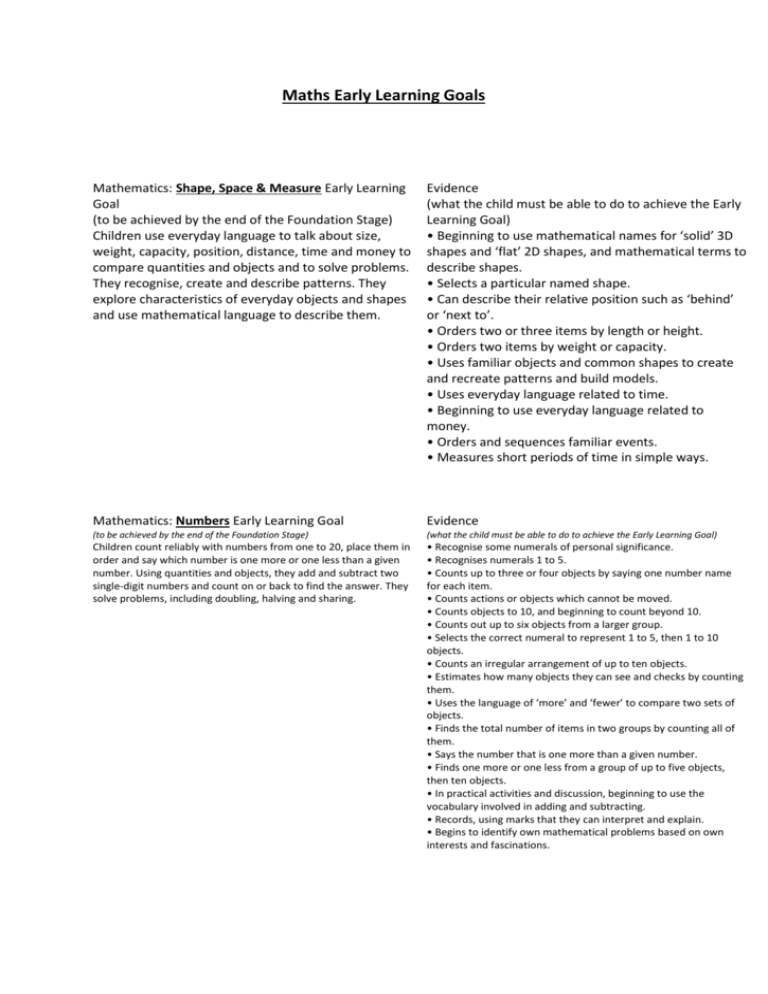
Maths Early Learning Goals Mathematics: Shape, Space & Measure Early Learning Goal (to be achieved by the end of the Foundation Stage) Children use everyday language to talk about size, weight, capacity, position, distance, time and money to compare quantities and objects and to solve problems. They recognise, create and describe patterns. They explore characteristics of everyday objects and shapes and use mathematical language to describe them. Evidence (what the child must be able to do to achieve the Early Learning Goal) • Beginning to use mathematical names for ‘solid’ 3D shapes and ‘flat’ 2D shapes, and mathematical terms to describe shapes. • Selects a particular named shape. • Can describe their relative position such as ‘behind’ or ‘next to’. • Orders two or three items by length or height. • Orders two items by weight or capacity. • Uses familiar objects and common shapes to create and recreate patterns and build models. • Uses everyday language related to time. • Beginning to use everyday language related to money. • Orders and sequences familiar events. • Measures short periods of time in simple ways. Mathematics: Numbers Early Learning Goal Evidence (to be achieved by the end of the Foundation Stage) (what the child must be able to do to achieve the Early Learning Goal) Children count reliably with numbers from one to 20, place them in order and say which number is one more or one less than a given number. Using quantities and objects, they add and subtract two single-digit numbers and count on or back to find the answer. They solve problems, including doubling, halving and sharing. • Recognise some numerals of personal significance. • Recognises numerals 1 to 5. • Counts up to three or four objects by saying one number name for each item. • Counts actions or objects which cannot be moved. • Counts objects to 10, and beginning to count beyond 10. • Counts out up to six objects from a larger group. • Selects the correct numeral to represent 1 to 5, then 1 to 10 objects. • Counts an irregular arrangement of up to ten objects. • Estimates how many objects they can see and checks by counting them. • Uses the language of ‘more’ and ‘fewer’ to compare two sets of objects. • Finds the total number of items in two groups by counting all of them. • Says the number that is one more than a given number. • Finds one more or one less from a group of up to five objects, then ten objects. • In practical activities and discussion, beginning to use the vocabulary involved in adding and subtracting. • Records, using marks that they can interpret and explain. • Begins to identify own mathematical problems based on own interests and fascinations.


